The Middle East is a region of extraordinary contrasts and captivating history, where ancient traditions blend seamlessly with modern lifestyles. Known for its vibrant cities, stunning architecture, and warm hospitality, this region offers travelers an unforgettable cultural journey. From bustling bazaars and historic landmarks to mouthwatering cuisine and mesmerizing art, the Middle East is a treasure trove of experiences waiting to be discovered. Whether you're a history enthusiast, a food lover, or simply an adventurer at heart, exploring these top cities will immerse you in a rich tapestry of heritage and traditions that define this fascinating part of the world.
Top 20 Cities Brimming with Diverse Culture and Traditions in the Middle East:
Doha, Qatar:
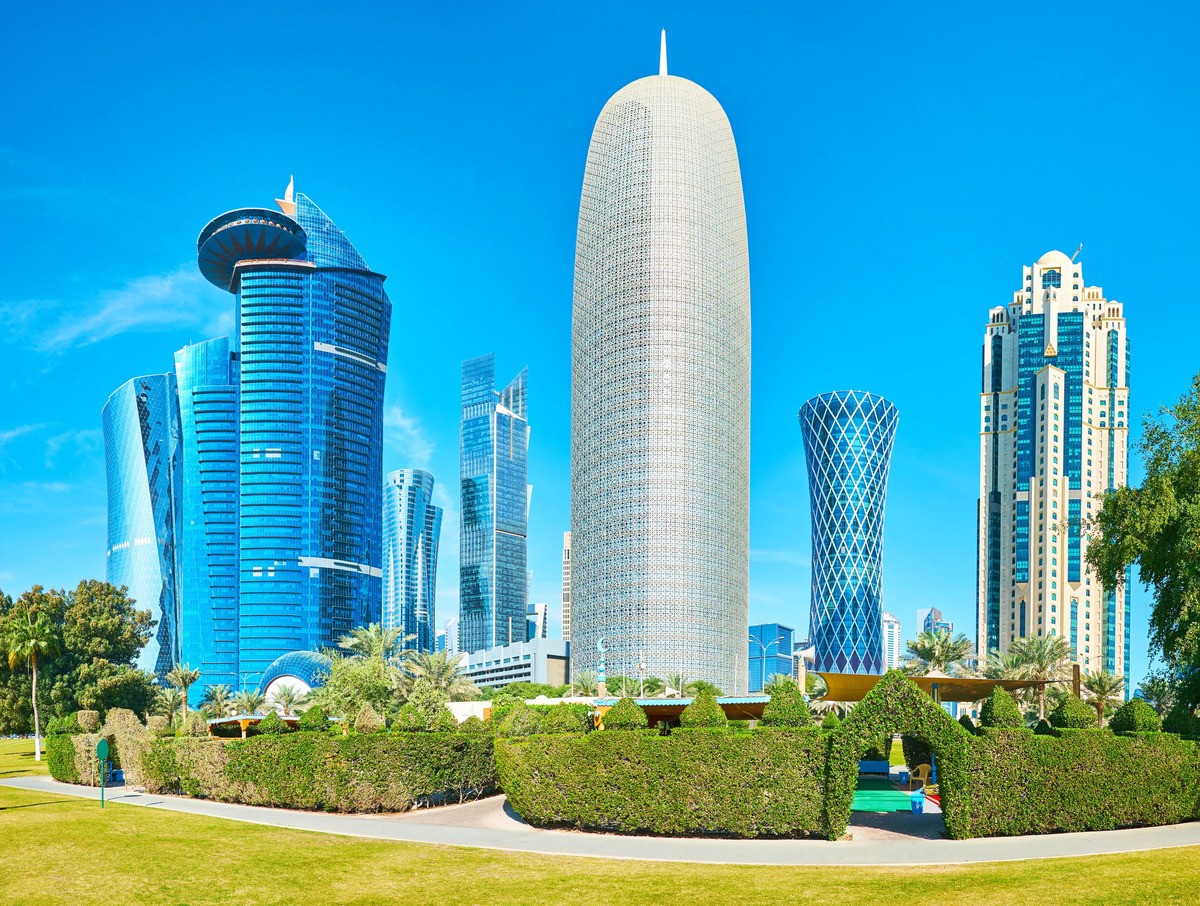
Doha, the capital of Qatar, is a city where modern innovation meets deep cultural traditions. Known for its striking skyline of futuristic skyscrapers, world-class museums, and a thriving art scene, Doha offers a unique blend of old and new. Visitors can explore its rich heritage through historic souks, the stunning Museum of Islamic Art, and the cultural landmark of Katara. Whether you're indulging in luxury shopping, enjoying a leisurely stroll along the Corniche, or discovering Qatari history, Doha promises an unforgettable experience.
- Best Time to Visit: The ideal time to visit Doha is between November and April, when the weather is cooler and perfect for outdoor adventures, sightseeing, and exploring the city's landmarks comfortably.
- Ideal Duration: 3 to 4-day.
- Popular Attractions: Discover the architectural marvels of the Museum of Islamic Art, take in panoramic views from the Aspire Tower, and wander through the beautiful Katara Cultural Village. Don’t miss a visit to the iconic Pearl-Qatar, an artificial island that exemplifies luxury.
- Things To Do: Whether you're shopping at Souq Waqif, soaking in the serene views along the Doha Corniche, or embarking on an exhilarating desert safari, there's no shortage of activities. Experience the blend of heritage and modern-day Doha in every corner.
- Best Shopping Markets: For a taste of traditional Qatari life, visit Souq Waqif, known for its spices, textiles, and handcrafted goods. For luxury shopping, head to Villaggio Mall, which offers high-end international brands in a Venice-inspired setting.
Dahab, Egypt:
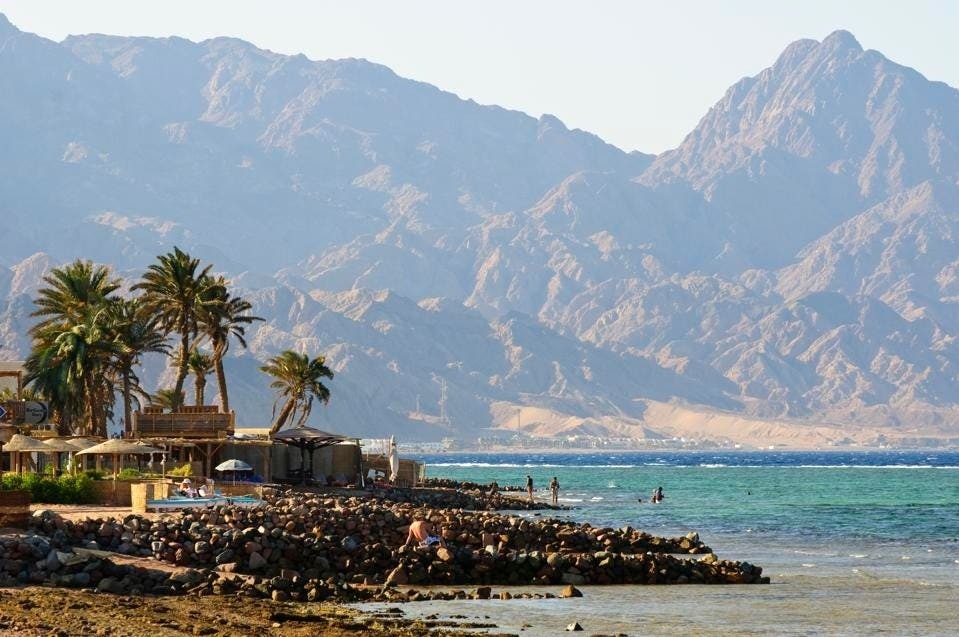
Dahab, a charming town on the Sinai Peninsula in Egypt, is known for its laid-back atmosphere, stunning landscapes, and world-class diving spots. Once a small Bedouin fishing village, Dahab has evolved into a popular destination for travelers seeking both adventure and tranquility. Whether you're diving in the world-famous Blue Hole, hiking through the desert mountains, or simply enjoying the pristine beaches, Dahab offers a peaceful escape while still offering plenty of activities for adventure seekers.
- Best Time to Visit: The best time to visit Dahab is during the cooler months, from October to April. This period offers pleasant temperatures for outdoor activities such as diving, hiking, and exploring the desert landscapes.
- Ideal Duration: 4 to 5-days.
- Popular Attractions: Don’t miss diving or snorkeling in the Blue Hole, one of the world’s most famous dive sites. Mount Sinai, a short drive from Dahab, offers a stunning hike to witness breathtaking sunrises. The Colored Canyon is another natural wonder, with its vibrant rock formations.
- Things To Do: Dahab is perfect for water sports, including kite surfing, windsurfing, and diving. You can also explore the desert on camel rides or 4x4 adventures, or relax on the beautiful beaches.
- Best Shopping Markets: Dahab's small shops and markets offer local crafts, jewelry, and handmade textiles. The town’s main street, Eel Garden, is filled with quirky shops and cozy cafes, perfect for an afternoon stroll and a unique souvenir hunt.
Jerusalem, Palestine:
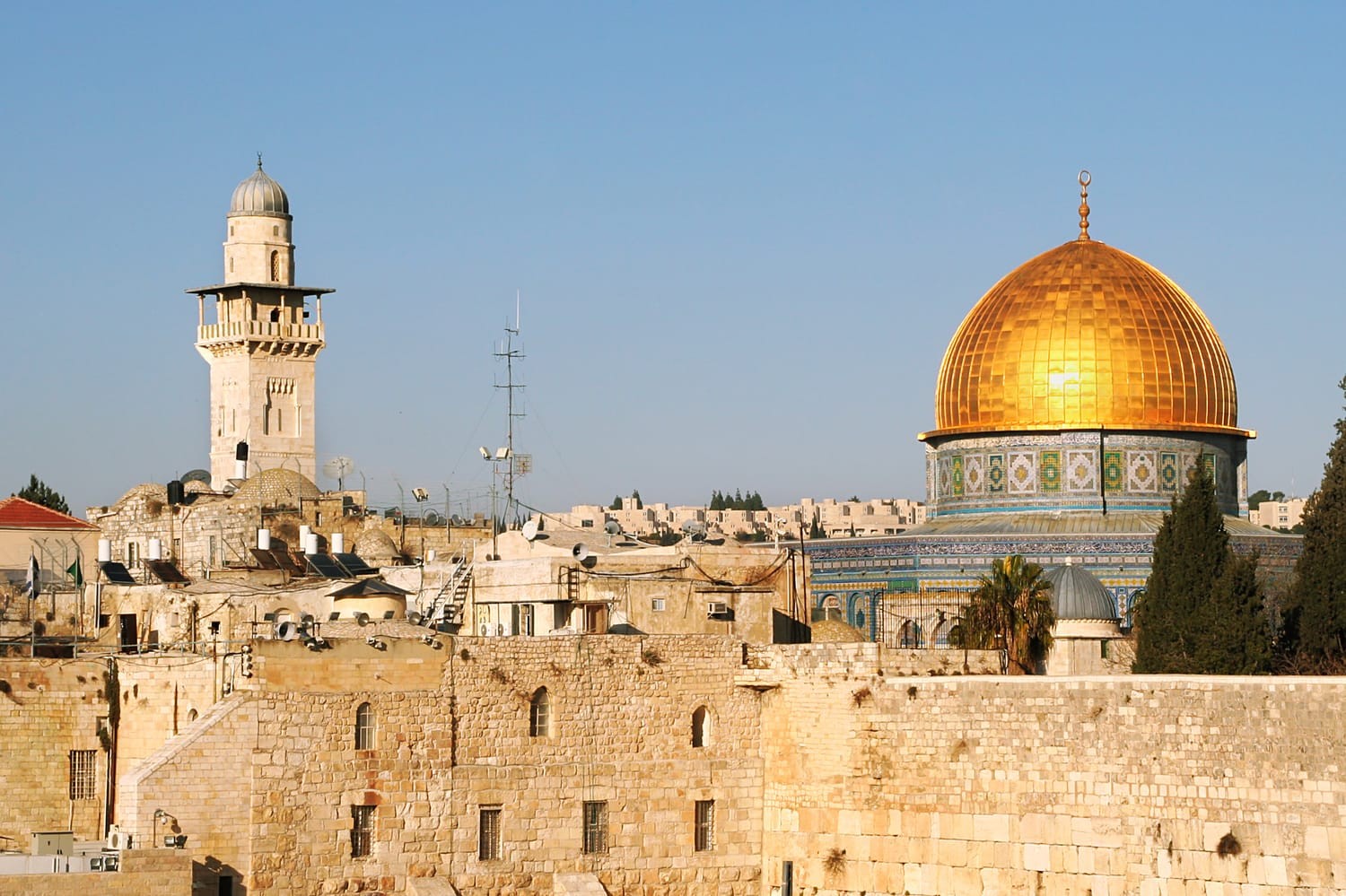
Jerusalem, one of the oldest and most revered cities in the world, is a place where history, spirituality, and culture converge. A city of profound religious significance for Jews, Christians, and Muslims alike, Jerusalem offers travelers a unique opportunity to explore ancient landmarks, sacred sites, and vibrant cultural traditions. Whether you're walking through the narrow streets of the Old City, visiting the Western Wall, or exploring the Dome of the Rock, Jerusalem’s rich history and spiritual atmosphere create a truly unforgettable experience.
- Best Time to Visit: The ideal time to visit Jerusalem is during the spring (March to May) and fall (September to November) when the weather is mild and pleasant. These seasons are perfect for exploring the city's outdoor sites and historical landmarks.
- Ideal Duration: 4 to 5-days.
- Popular Attractions: Key sites in Jerusalem include the Western Wall, the Dome of the Rock, and the Church of the Holy Sepulchre. The ancient Old City, divided into Jewish, Christian, Muslim, and Armenian quarters, is a must-visit for its historical and religious importance.
- Things To Do: In addition to visiting religious landmarks, wander through the bustling markets of the Old City, experience the vibrant Mahane Yehuda Market, or take a walk along the city’s ancient walls. Don’t miss a visit to the Yad Vashem Holocaust Memorial, which offers a poignant and educational experience.
- Best Shopping Markets: The Old City’s souks offer an array of traditional items, from spices to textiles, jewelry, and souvenirs. For a more modern shopping experience, head to the Mahane Yehuda Market, where you’ll find fresh produce, local food stalls, and unique crafts.
Dubai, United Arab Emirates:
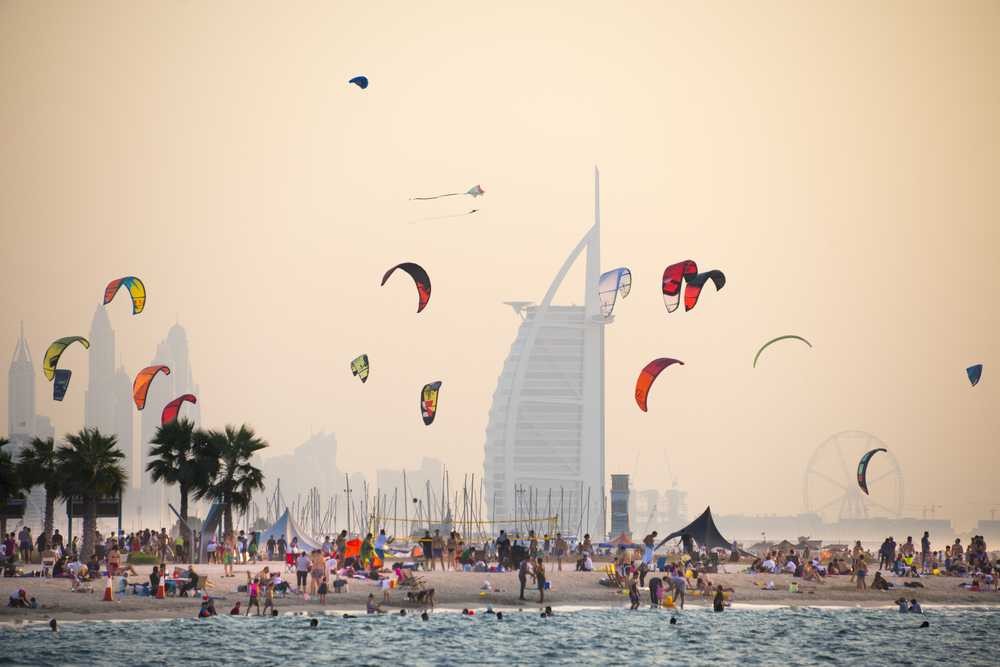
Dubai, the crown jewel of the United Arab Emirates, is a dazzling metropolis that blends futuristic architecture with rich cultural traditions. Known for its opulence, innovative landmarks, and world-class shopping, Dubai attracts travelers seeking both adventure and indulgence. From its iconic skyscrapers to its golden deserts, Dubai offers an unforgettable experience for every type of traveler.
- Best Time to Visit: The best time to visit Dubai is from November to March, when the weather is pleasant and ideal for outdoor activities. This period allows visitors to explore the city comfortably, attend festivals, and enjoy the stunning beaches.
- Ideal Duration: 3 to 4-days.
- Popular Attractions: Dubai’s landmarks are truly spectacular. Don’t miss the Burj Khalifa, the world’s tallest building, for panoramic city views. The Palm Jumeirah and Burj Al Arab are iconic symbols of luxury, while Dubai’s historical side can be explored at the Al Fahidi Historical Neighborhood and Dubai Museum.
- Things To Do: For adventure enthusiasts, try a thrilling desert safari, visit Atlantis Aquaventure Waterpark, or shop at the Dubai Mall. You can also take a traditional abra ride along Dubai Creek, visit the Global Village, or unwind at Jumeirah Beach.
- Best Shopping Markets: Dubai is a shopping paradise, with world-renowned malls like The Dubai Mall and Mall of the Emirates offering everything from high-end fashion to electronics. For a more traditional shopping experience, explore the Gold Souk and Spice Souk, where you can find unique treasures and local goods.
Istanbul, Turkey:
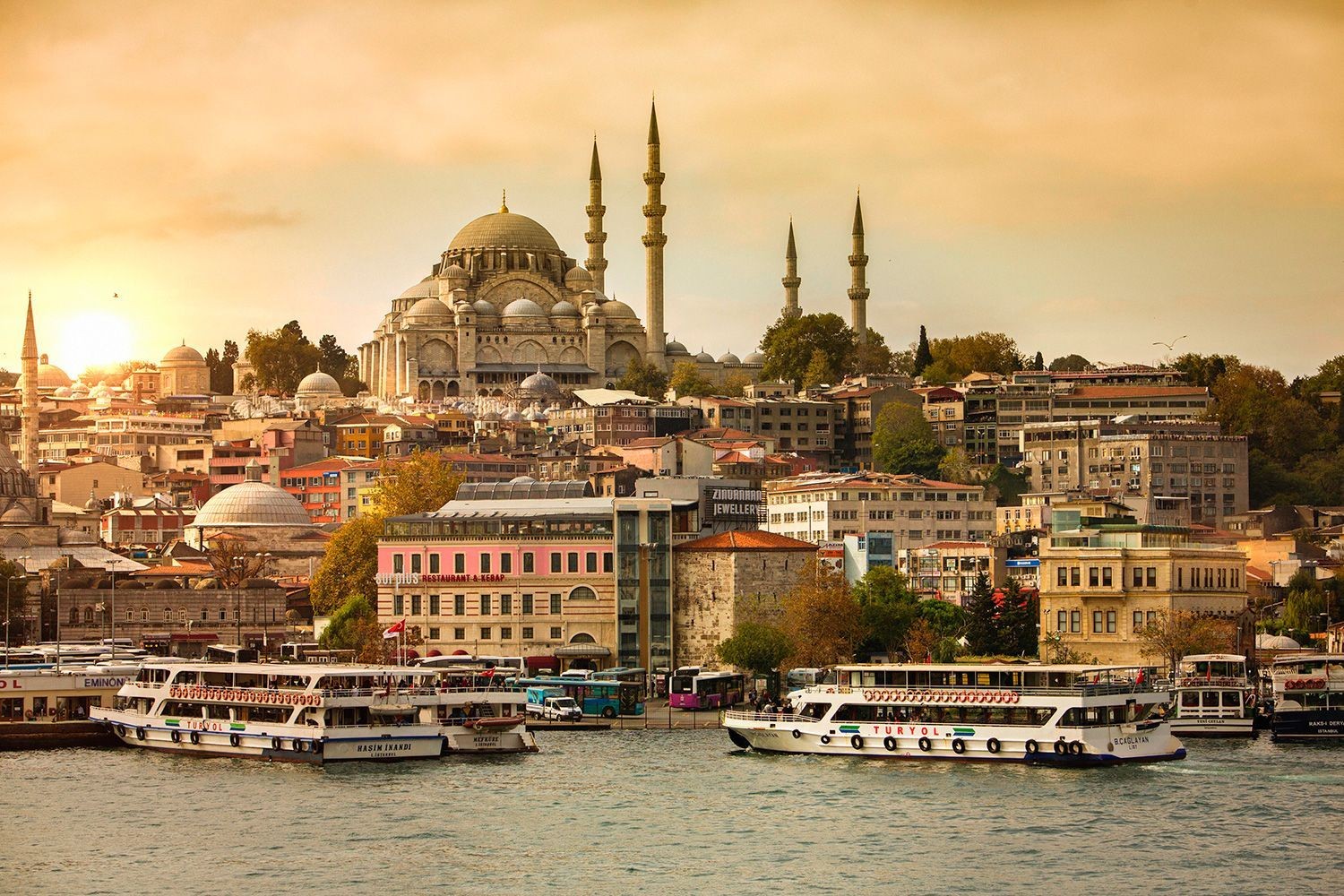
Istanbul, Turkey’s vibrant cultural capital, is a city where East meets West, offering a fascinating blend of ancient history, stunning architecture, and contemporary flair. From the magnificent mosques to bustling markets, Istanbul’s unique charm lies in its rich blend of cultures, religions, and traditions. As a city straddling two continents, it boasts an array of historical landmarks, modern attractions, and a lively atmosphere that keeps visitors coming back for more.
- Best Time to Visit: The best time to visit Istanbul is during the spring (April to June) and fall (September to November), when the weather is mild and ideal for exploring the city's outdoor sites, markets, and historical attractions.
- Ideal Duration: 4 to 5-days.
- Popular Attractions: Istanbul is home to iconic landmarks such as the Hagia Sophia, Blue Mosque, and Topkapi Palace. Don’t miss the stunning Bosphorus Strait, which divides Europe and Asia, and the vibrant Grand Bazaar for a shopping experience like no other.
- Things To Do: Explore the historic Sultanahmet district, take a cruise on the Bosphorus to view the city from the water, visit the ancient Basilica Cistern, and enjoy a Turkish bath (Hammam). Food lovers can delight in the local street food, such as simit (Turkish bagel) and baklava.
- Best Shopping Markets: The Grand Bazaar is a must-visit for those looking to shop for traditional Turkish goods like carpets, spices, and jewelry. For a more modern shopping experience, head to Istiklal Street or the vibrant Nişantaşı district for high-end boutiques and local designer stores.
Abu Dhabi, United Arab Emirates:
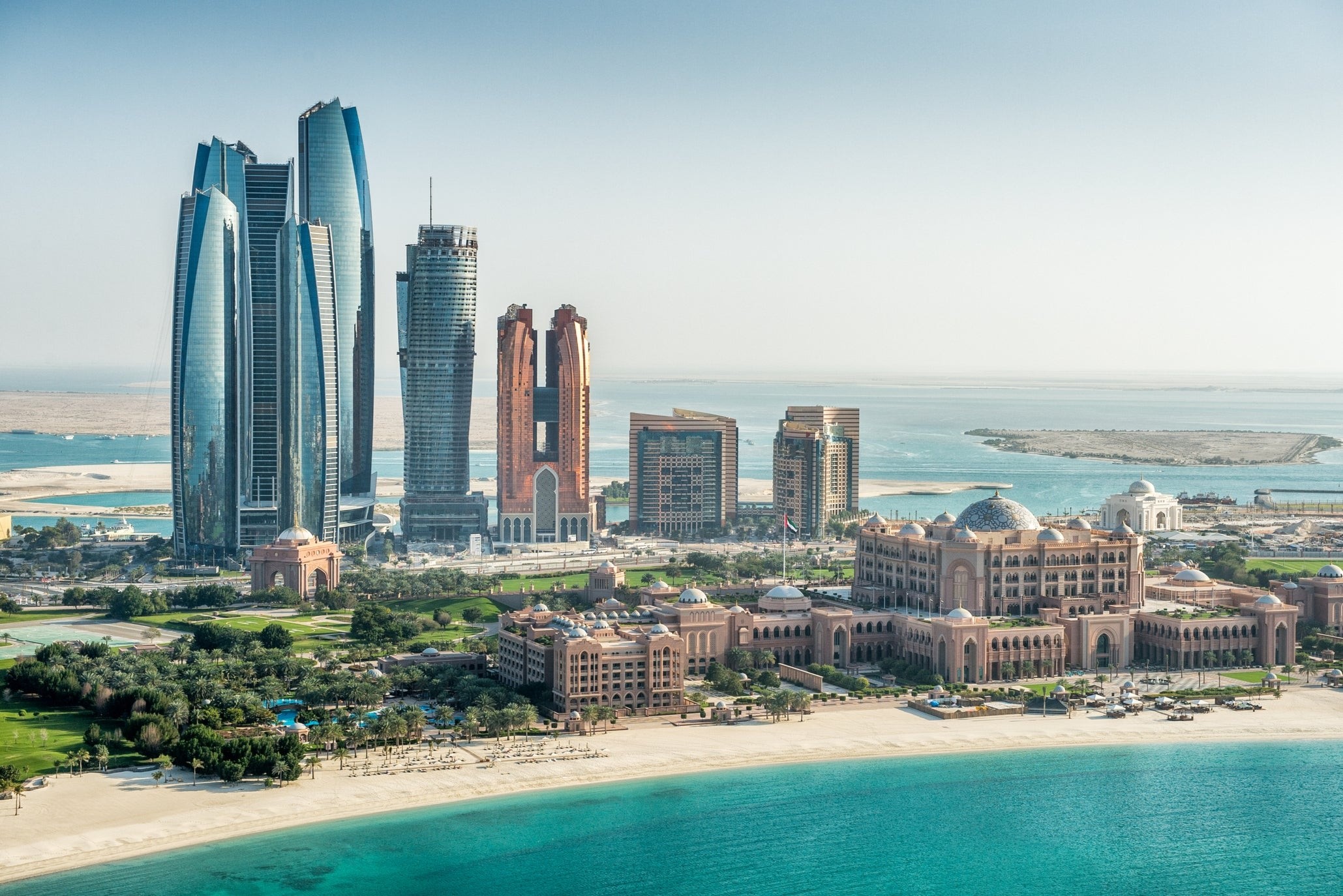
Abu Dhabi, the capital of the United Arab Emirates, is a city that epitomizes luxury, innovation, and cultural richness. Known for its towering skyscrapers, world-class attractions, and deep-rooted heritage, Abu Dhabi offers a diverse range of experiences that captivate visitors. From stunning beaches and vibrant shopping malls to impressive landmarks, the city effortlessly blends modern marvels with traditional Arabian charm.
- Best Time to Visit: The ideal time to visit Abu Dhabi is during the cooler months, from November to April, when the weather is perfect for outdoor exploration, desert adventures, and beach activities.
- Ideal Duration: 3 to 4-days.
- Popular Attractions: Don’t miss the stunning Sheikh Zayed Grand Mosque, a breathtaking piece of architecture. Other must-visit sites include the Louvre Abu Dhabi, Ferrari World, and the Abu Dhabi Corniche, offering beautiful views of the waterfront.
- Things To Do: Experience a thrilling desert safari, relax on the pristine beaches of Saadiyat Island, or enjoy a luxurious shopping spree at The Galleria Mall. You can also explore the cultural district on Saadiyat Island or unwind at the tranquil Mangrove National Park.
- Best Shopping Markets: Abu Dhabi is a shopper’s paradise, with malls like Marina Mall and Yas Mall offering everything from luxury brands to local boutiques. For a more traditional shopping experience, visit the Central Market (Souk) for jewelry, spices, and souvenirs.
Tel Aviv, Israel:
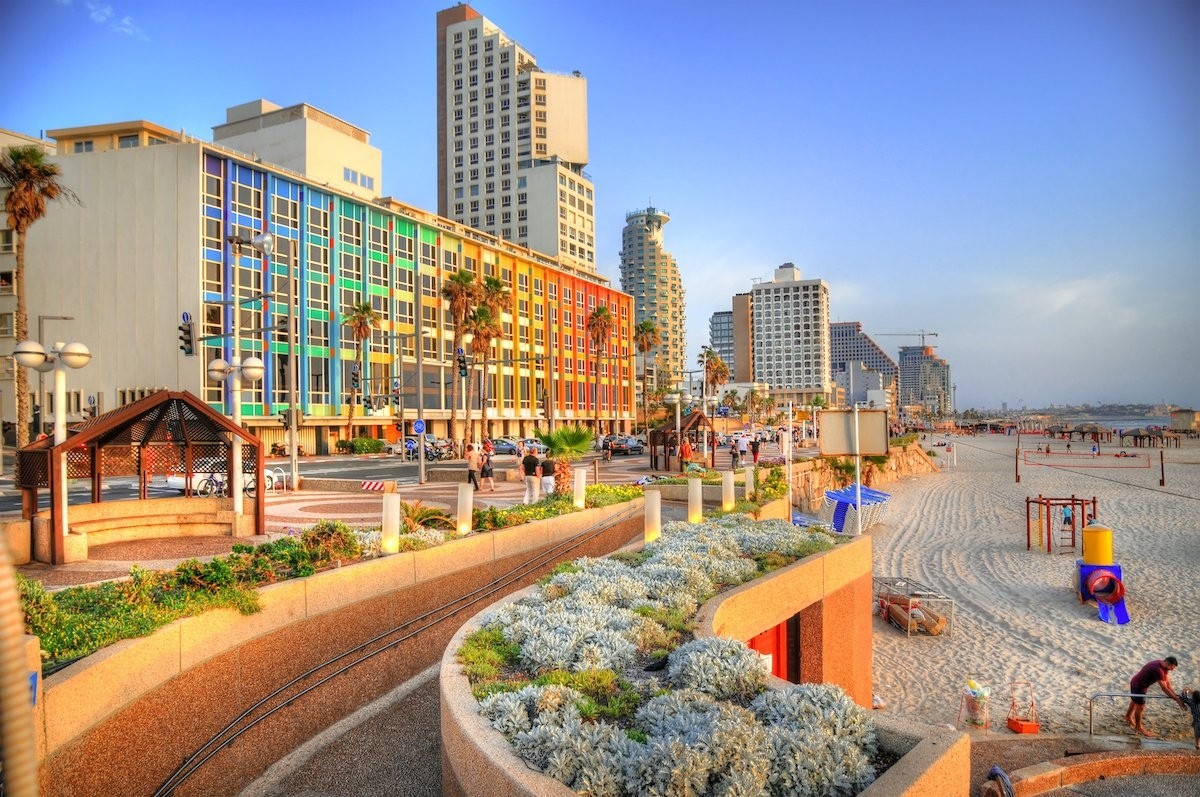
Tel Aviv, Israel's dynamic cultural and economic hub, offers a unique fusion of modern lifestyle and historical significance. Known for its lively beaches, thriving nightlife, and cutting-edge architecture, Tel Aviv is a city that never sleeps. It boasts a rich history, a vibrant arts scene, and a cosmopolitan atmosphere, making it a top destination for travelers seeking both relaxation and adventure. Whether you're wandering through the ancient streets of Jaffa or enjoying the city's vibrant café culture, Tel Aviv promises an unforgettable experience.
- Best Time to Visit: The best time to visit Tel Aviv is during the spring (March to May) and fall (September to November), when the weather is mild and ideal for exploring the city’s outdoor attractions, beaches, and markets.
- Ideal Duration: 3 to 4-days.
- Popular Attractions: Visit the ancient port city of Jaffa, with its historic alleys, galleries, and stunning views of the Mediterranean. The White City, a UNESCO World Heritage site, showcases Bauhaus architecture. You can also explore the bustling Carmel Market, the Yarkon Park, and the Tel Aviv Museum of Art.
- Things To Do: Relax on Tel Aviv’s beautiful beaches, take a bike ride along the Tel Aviv promenade, or shop for local goods at the Carmel Market. For a taste of local culture, visit the Bauhaus architecture and explore the local cafes. Don’t miss a night out in Tel Aviv's vibrant nightlife scene, with bars, clubs, and live music venues.
- Best Shopping Markets: Tel Aviv is a shopper’s paradise, with markets like Carmel Market offering fresh produce, spices, and unique souvenirs. For high-end fashion, visit Dizengoff Street and the upscale shopping centers like the TLV Fashion Mall.
Antalya, Turkey:
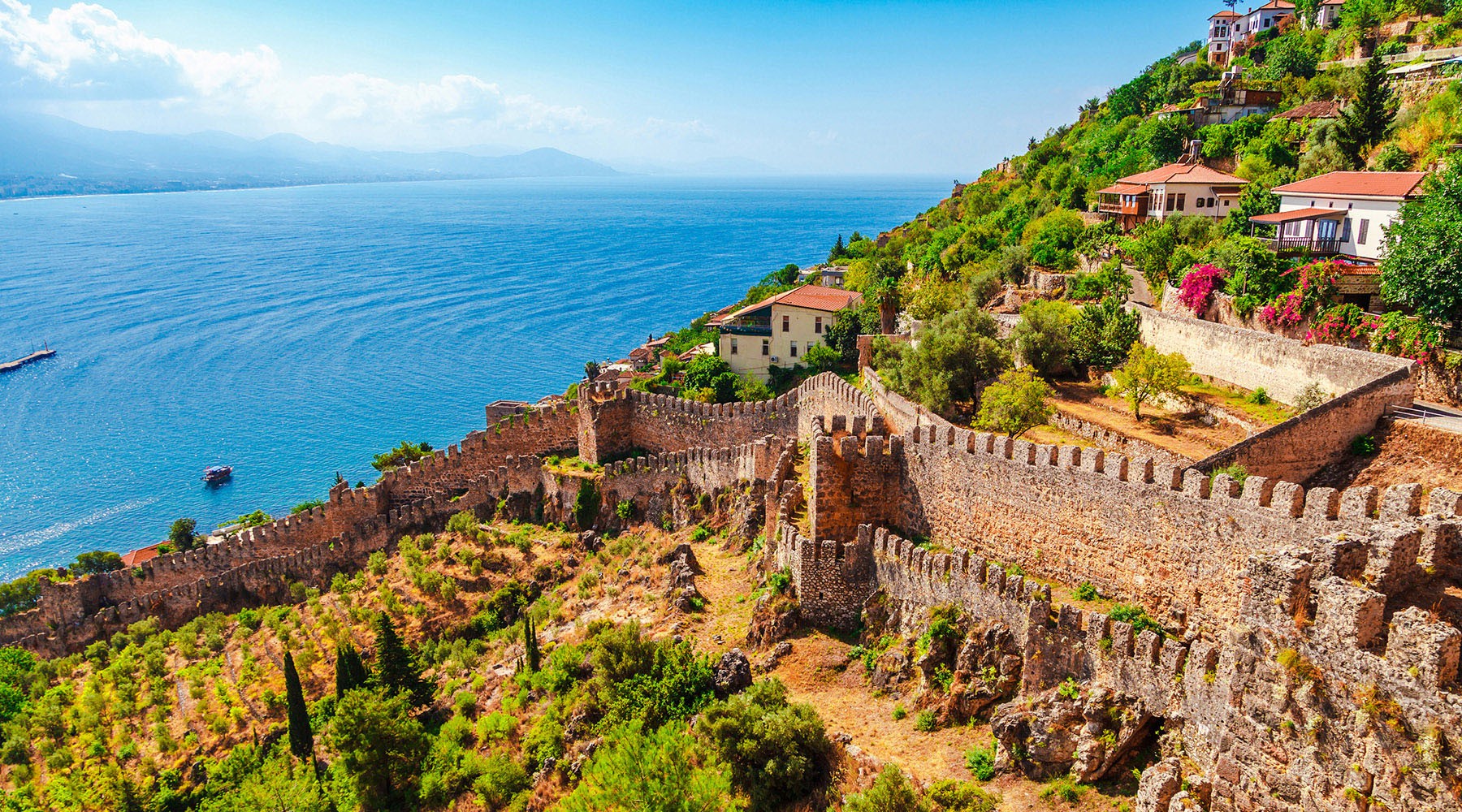
Antalya, located on Turkey’s southern Mediterranean coast, is a captivating city where ancient history, rich culture, and breathtaking landscapes meet. Known for its pristine beaches, lush mountains, and ancient ruins, Antalya offers visitors a perfect mix of relaxation and adventure. From the tranquil shores of the Mediterranean to the iconic historical sites, this city is a hidden gem for travelers seeking both culture and natural beauty.
- Best Time to Visit: The best time to visit Antalya is from April to October, when the weather is warm and perfect for beach activities, sightseeing, and outdoor excursions. However, the spring and fall months (April to June and September to November) offer more comfortable temperatures for exploring.
- Ideal Duration: 4 to 5-days.
- Popular Attractions: Must-see attractions in Antalya include the ancient Roman ruins of Hadrian’s Gate, the picturesque old town of Kaleiçi, and the impressive Düden Waterfalls. Don’t miss the ancient theater of Aspendos and the well-preserved ruins of Termessos for a glimpse into the city’s rich past.
- Things To Do: Spend time at the beautiful Lara Beach and Konyaaltı Beach, take a boat ride along the stunning coastline, and explore the picturesque old town. You can also visit the Antalya Archaeological Museum or hike up to the stunning cliffs of the Taurus Mountains for spectacular views.
- Best Shopping Markets: Antalya’s markets, such as the Kaleiçi Bazaar, offer an array of local products, including Turkish carpets, handcrafted jewelry, spices, and textiles. For a more modern shopping experience, head to the TerraCity Mall or MarkAntalya Mall for international brands and local boutiques.
Petra, Jordan:
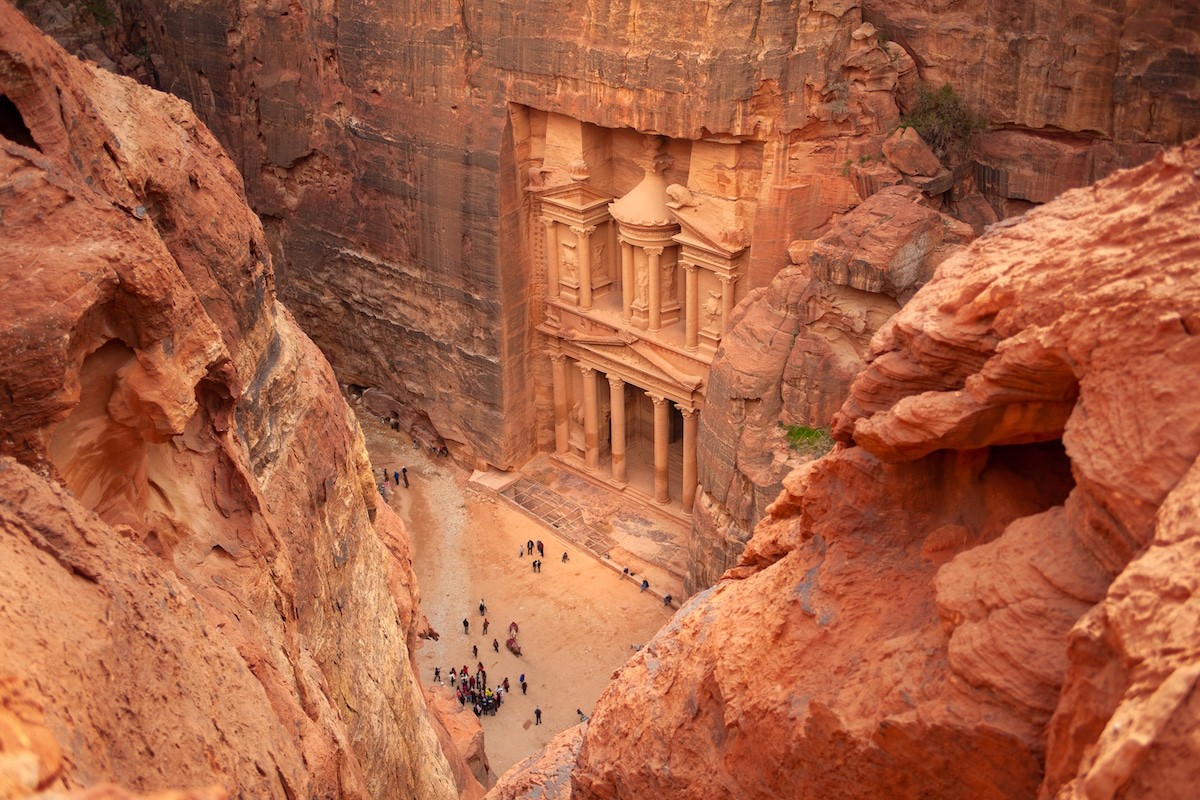
Petra, one of the most famous archaeological sites in the world, is a breathtaking ancient city located in the heart of Jordan. Known for its extraordinary rock-cut architecture and water conduit system, Petra was the capital of the Nabataean Kingdom and is now one of the New Seven Wonders of the World. With its stunning tombs, temples, and intricate facades carved into the rose-red sandstone cliffs, Petra offers a mesmerizing glimpse into the ingenuity and cultural richness of ancient civilizations.
- Best Time to Visit: The best time to visit Petra is during the spring (March to May) and fall (September to November), when the weather is mild and perfect for hiking and exploring the vast archaeological site. Summer can be extremely hot, especially for outdoor activities.
- Ideal Duration: 2 to 3-days.
- Popular Attractions: The iconic Treasury (Al-Khazneh), carved into the cliffs, is the highlight of Petra. Other must-see sites include the Monastery (Al-Deir), the Street of Facades, the Royal Tombs, and the Roman-style theater. The Siq, a narrow, winding gorge leading to Petra, is an unforgettable experience in itself.
- Things To Do: Aside from exploring Petra’s historic sites, take a hike to the Monastery or the High Place of Sacrifice for panoramic views of the surrounding desert landscape. Experience the beauty of the Petra by Night tour, when the site is illuminated by thousands of candles. For an adventurous experience, consider a guided trek or camel ride through the desert.
- Best Shopping Markets: The Petra Visitor Center and nearby shops offer local handicrafts, jewelry, and souvenirs, including traditional Bedouin products, such as woven textiles, pottery, and handmade jewelry. For a more authentic experience, explore the Bedouin markets around Petra, where you can purchase local goods and support the local community.
Ankara, Turkey:
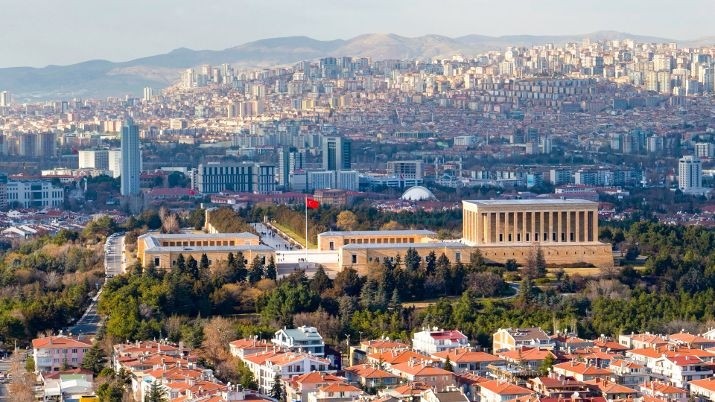
Ankara, the capital of Turkey, may not have the same tourist spotlight as Istanbul, but it is a city rich in history, culture, and modernity. As the political and administrative center of Turkey, Ankara is home to impressive museums, government buildings, and vibrant neighborhoods. It offers a fascinating blend of ancient landmarks, like the Roman Temple of Augustus, alongside a contemporary, dynamic atmosphere with bustling markets and modern cafes. Ankara is perfect for travelers interested in exploring Turkey's culture, history, and evolving urban landscape.
- Best Time to Visit: The best time to visit Ankara is during the spring (April to June) and fall (September to November) when the weather is mild and ideal for sightseeing. Winters can be cold, especially for outdoor activities, while summers can be hot and dry.
- Ideal Duration: 2 to 3-days.
- Popular Attractions: Key attractions in Ankara include the magnificent Atatürk Mausoleum (Anıtkabir), which is dedicated to the founder of modern Turkey, Mustafa Kemal Atatürk. The ancient Roman Temple of Augustus, the Haci Bayram Mosque, and the Ankara Castle are also must-visit sites, offering a glimpse into the city’s long history. The Museum of Anatolian Civilizations, with its impressive collection of artifacts from ancient Anatolia, is another highlight.
- Things To Do: Visit the historic Ankara Castle for panoramic views of the city, stroll through the bustling Kocatepe neighborhood for shopping and dining, or relax in Gençlik Park. If you’re a history lover, a trip to the Museum of Anatolian Civilizations is a must. You can also take a boat ride along the Eymir Lake or enjoy the city’s vibrant nightlife.
- Best Shopping Markets: For traditional Turkish shopping, visit the historic Ulus district, where you can find local handicrafts, textiles, spices, and jewelry. For a more modern shopping experience, explore the shopping malls like Kocatepe or Armada, which feature both international brands and local Turkish designers.
Sharjah, United Arab Emirates:
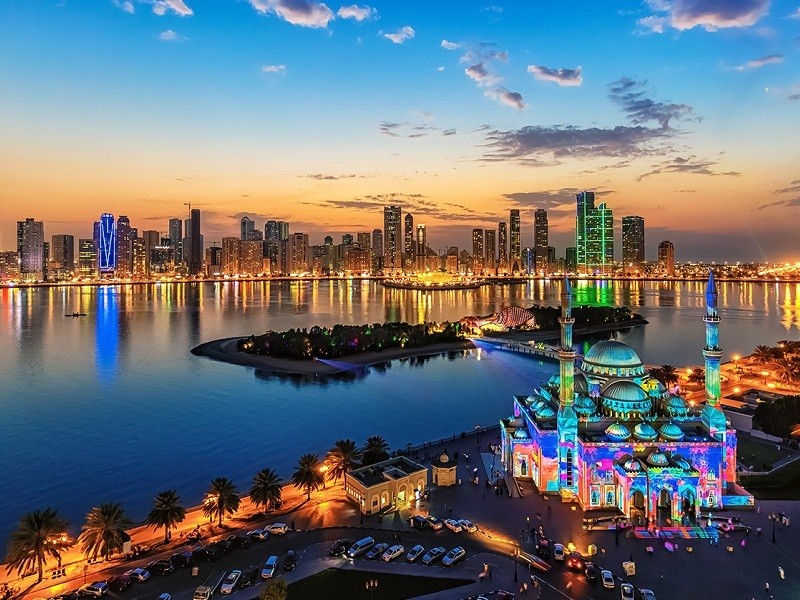
Sharjah, the third-largest emirate in the United Arab Emirates, is often considered the cultural heart of the country. Known for its rich history, vibrant arts scene, and commitment to preserving traditional Arab heritage, Sharjah offers a unique experience compared to its more modern counterparts, like Dubai and Abu Dhabi. With a mix of museums, galleries, traditional markets, and stunning waterfront views, Sharjah is a perfect destination for those looking to immerse themselves in the cultural richness and beauty of the UAE.
- Best Time to Visit: The best time to visit Sharjah is between November and March, when the weather is cooler and more comfortable for outdoor activities, sightseeing, and exploring the city's many attractions.
- Ideal Duration: 2 to 3-days.
- Popular Attractions: Sharjah is home to a wealth of cultural and historical sites. The Sharjah Museum of Islamic Civilization is a must-visit for history and art enthusiasts, while the Sharjah Arts Museum is a key cultural attraction. The Al Noor Mosque, with its stunning architecture, and the Al Majaz Waterfront, offering beautiful views of the city skyline, are also popular spots.
- Things To Do: Explore the traditional markets (souks) of Sharjah, including the Central Souk (also known as the Blue Souk) for its unique jewelry, textiles, and antiques. Take a stroll along the picturesque Al Qasba canal or visit the Butterfly House in Sharjah’s Al Montazah Parks for a more family-friendly experience. Don’t miss a visit to the Sharjah Heritage Area, where you can explore the city’s past with preserved buildings and museums.
- Best Shopping Markets: Sharjah’s shopping scene is a blend of traditional and modern markets. The Central Souk (Blue Souk) is a must-visit for traditional Arab goods, including carpets, gold, spices, and perfumes. For more modern shopping, head to the Sahara Centre or City Centre Sharjah, which offer a mix of international brands and local stores.
Amadiya, Iraq:
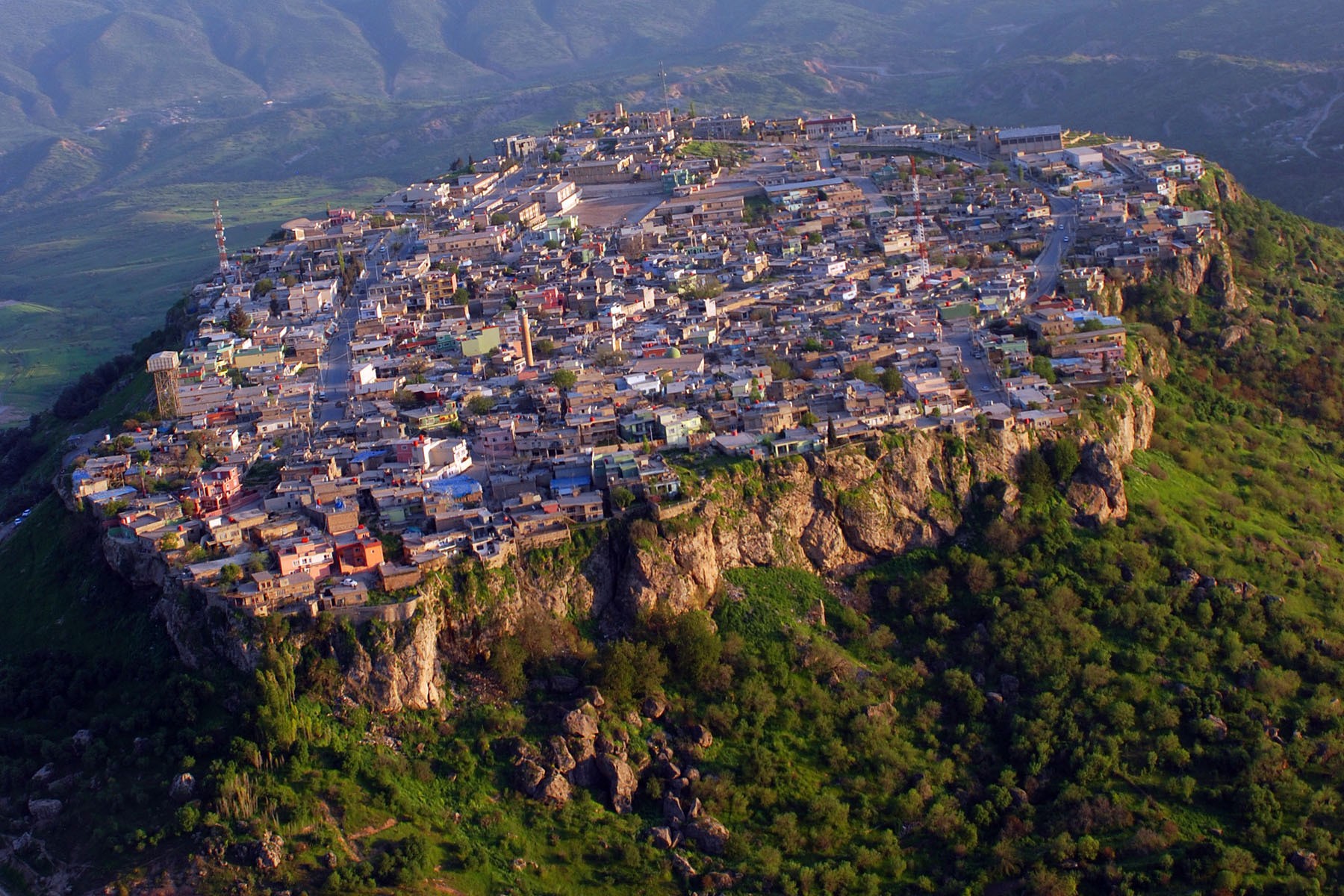
Amadiya, a picturesque town nestled in the heart of the Kurdish region of northern Iraq, is a captivating destination for travelers seeking both history and natural beauty. Perched atop a hill at an altitude of 1,200 meters, this ancient town offers stunning views of the surrounding mountains and valleys. Known for its well-preserved architecture, vibrant culture, and rich history, Amadiya provides a rare glimpse into Iraq’s past and Kurdish heritage. With its charming streets, historical landmarks, and serene environment, Amadiya is a perfect escape for those interested in exploring an off-the-beaten-path destination.
- Best Time to Visit: The best time to visit Amadiya is in the spring (April to June) and autumn (September to November), when the weather is mild and comfortable for exploring the town and surrounding natural landscapes. Summers can be hot, and winters may be cold and snowy, especially in the mountains.
- Ideal Duration: 2 to 3-days.
- Popular Attractions: Amadiya is home to several historical and cultural sites, including the ancient Amadiya Citadel, which offers panoramic views of the surrounding area. The town also features traditional Kurdish architecture, beautiful mosques, and the nearby breathtaking countryside. The Qishla of Amadiya, a former military barracks, and the tomb of Sheikh Ahmad, a prominent figure in Kurdish history, are also notable sites.
- Things To Do: Take a leisurely walk through Amadiya’s charming narrow streets, visit local markets for traditional crafts and goods, and enjoy the scenic views from the town’s hilltop location. Explore the nearby mountains on foot, go hiking, or take a short trip to nearby villages to experience Kurdish culture and hospitality.
- Best Shopping Markets: Amadiya’s local markets offer a variety of traditional Kurdish handicrafts, textiles, and spices. For a more authentic experience, visit the town’s weekly bazaar, where you can find handmade products, local food, and unique souvenirs.
Isfahan, Iran:
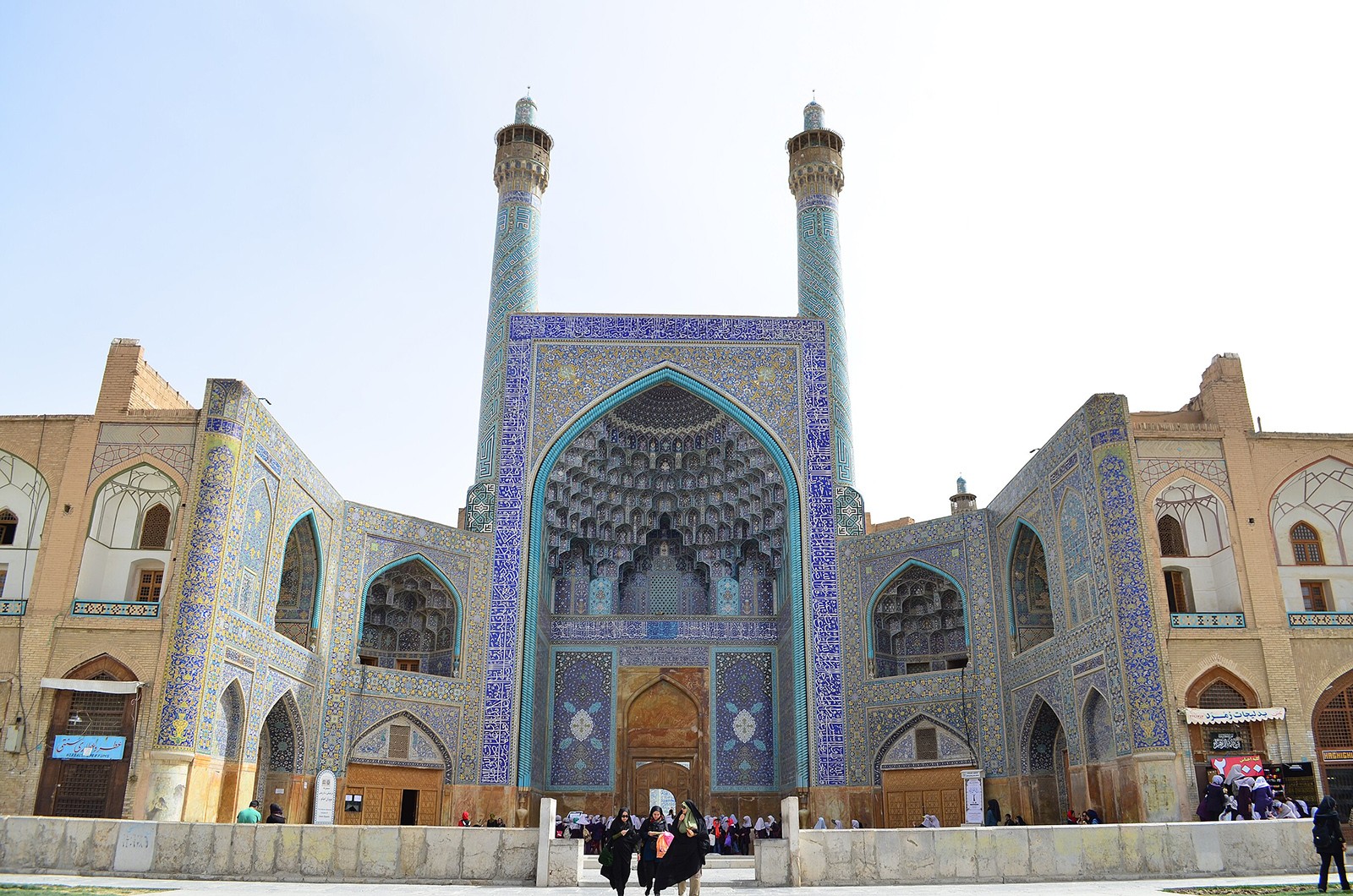
Isfahan, one of Iran’s most iconic cities, is a stunning showcase of Persian art, architecture, and culture. Often referred to as “Half the World” due to its immense beauty and historical significance, Isfahan is home to some of the most impressive architectural masterpieces in the world. From the grand Naghsh-e Jahan Square to the intricate mosques and palaces, Isfahan offers a captivating glimpse into Iran’s glorious past. Whether you're a history enthusiast, an architecture lover, or simply looking to experience the heart of Iranian culture, Isfahan is a must-visit destination.
- Best Time to Visit: The best time to visit Isfahan is during the spring (March to May) and autumn (September to November) when the weather is pleasant and ideal for sightseeing. Summers can be extremely hot, while winters can be cold but offer a quieter, more peaceful atmosphere for exploration.
- Ideal Duration: 3 to 4-days.
- Popular Attractions: Isfahan is home to some of Iran’s most famous landmarks. Naghsh-e Jahan Square, a UNESCO World Heritage site, is the heart of the city and is surrounded by iconic buildings such as the Shah Mosque, Ali Qapu Palace, and the Sheikh Lotfollah Mosque. Don’t miss the beautiful Si-o-se-pol Bridge, the historic Jameh Mosque, and the picturesque Vank Cathedral, showcasing Isfahan's unique blend of Persian and Armenian cultures.
- Things To Do: Stroll through Isfahan's lush gardens, including the stunning Hasht Behesht Palace Garden and the Flower Garden, or take a walk along the Zayanderud River and admire its historical bridges. Experience local culture by visiting the traditional Isfahan Bazaar, where you can shop for Persian carpets, handicrafts, and spices. Be sure to visit the mesmerizing Isfahan Music Museum or indulge in local Persian cuisine at one of the city's traditional restaurants.
- Best Shopping Markets: Isfahan’s traditional bazaar is a must-visit for shoppers, where you’ll find Persian rugs, handwoven textiles, jewelry, spices, and other handicrafts. The Bazaar of Isfahan stretches for miles and is an excellent place to experience the city’s vibrant culture. For modern shopping, visit the local malls and shops along Chahar Bagh Avenue for a mix of contemporary fashion and unique local items.
Baalbek, Lebanon:
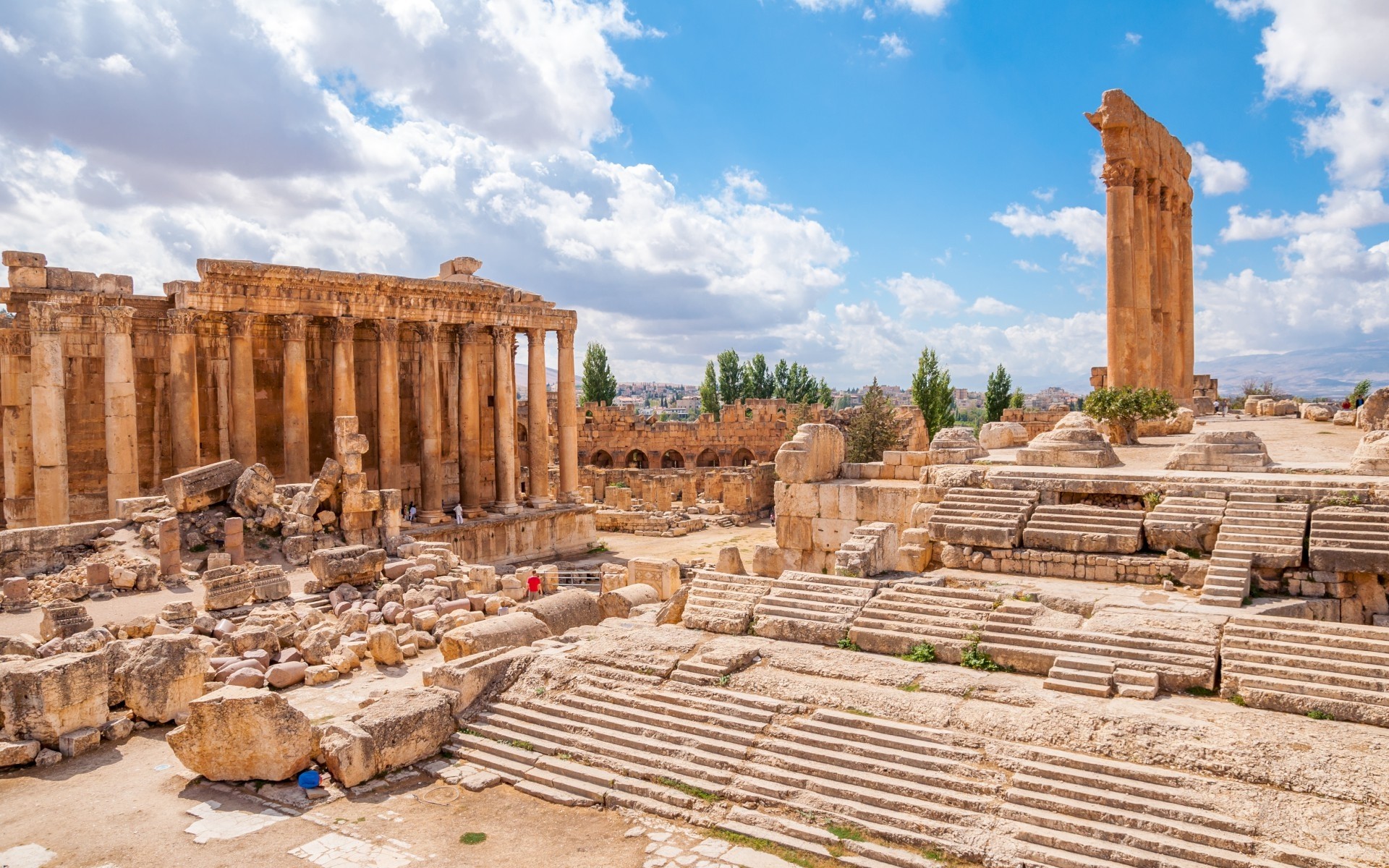
Baalbek, located in the Bekaa Valley of Lebanon, is one of the most extraordinary archaeological sites in the world, known for its ancient Roman ruins that stand as a testament to the grandeur of the Roman Empire. With its towering columns, massive temples, and rich history, Baalbek is a place where history, culture, and natural beauty converge. The city’s ancient ruins, particularly the Temple of Jupiter, are awe-inspiring and offer visitors a chance to step back in time and explore the magnificence of Roman engineering and artistry.
- Best Time to Visit: The best time to visit Baalbek is during the spring (April to June) and fall (September to November) when the weather is mild and perfect for outdoor exploration. Summers can be hot in the Bekaa Valley, and winters can be chilly, especially with snow in the surrounding mountains.
- Ideal Duration: 1 to 2-days.
- Popular Attractions: The highlight of Baalbek is the UNESCO World Heritage-listed Roman ruins, particularly the awe-inspiring Temple of Jupiter, Temple of Bacchus, and the Temple of Venus. The Baalbek archaeological site is one of the best-preserved Roman sites in the world. The Baalbek Museum, located near the ruins, is also worth a visit for those interested in learning more about the site’s history and artifacts.
- Things To Do: Walk through the ancient ruins and admire the grandeur of the massive stone structures, visit the nearby Roman baths and the city’s theater, and explore the local shops for traditional Lebanese goods. You can also enjoy a scenic drive through the Bekaa Valley, known for its vineyards, olive groves, and picturesque villages.
- Best Shopping Markets: Baalbek’s local market offers a selection of traditional Lebanese goods, including handmade crafts, textiles, spices, and local produce. The town’s souks (markets) provide an authentic experience where you can shop for souvenirs, Lebanese wine, and local products. For more extensive shopping, head to nearby towns in the Bekaa Valley for locally-produced items like olive oil and wines from the region’s famous vineyards.
Cairo, Egypt:
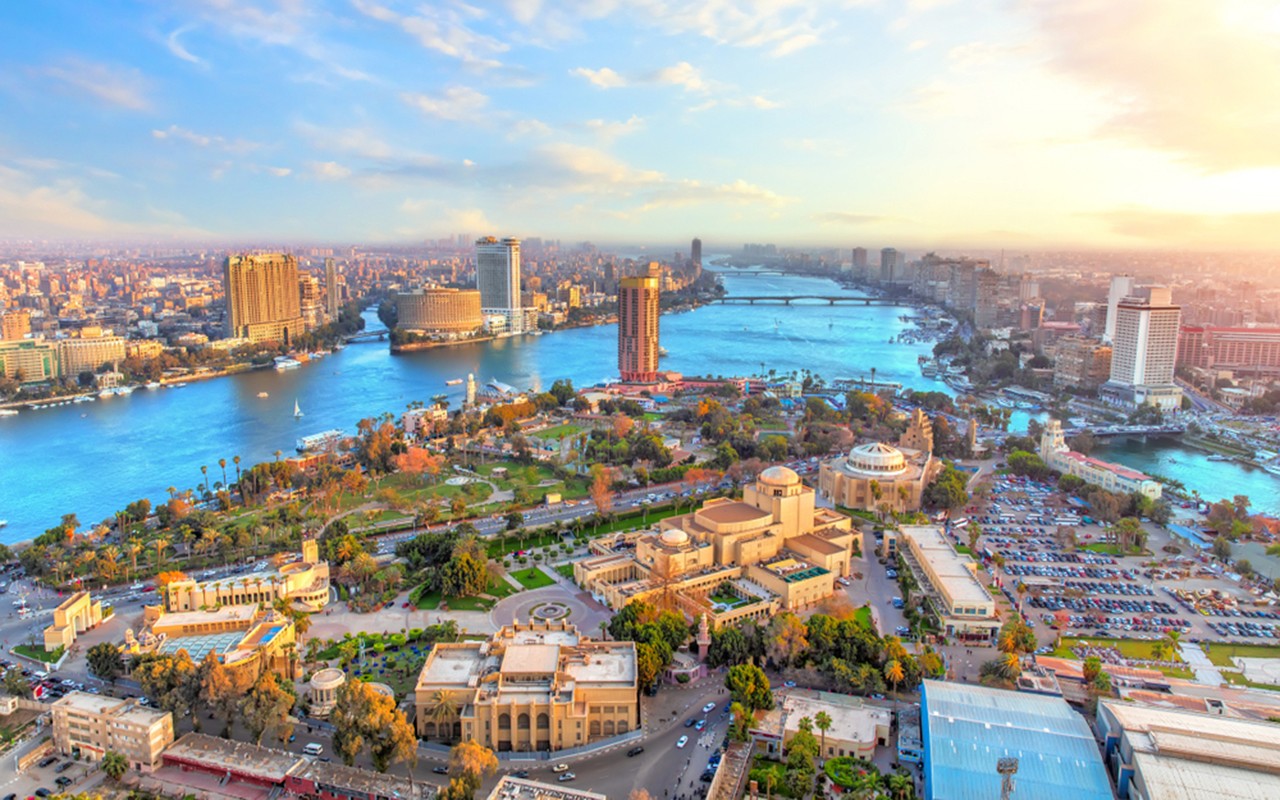
Cairo, the capital of Egypt, is an exhilarating blend of ancient history, modernity, and vibrant culture. As the gateway to the timeless wonders of Ancient Egypt, Cairo is home to some of the world’s most iconic landmarks, including the Great Pyramids of Giza and the Sphinx. The city also offers a thriving cultural scene, with bustling markets, museums, and lively streets that capture the essence of Egyptian life. Whether you're exploring the ancient pyramids, cruising along the Nile River, or indulging in local cuisine, Cairo offers an unforgettable experience for every traveler.
- Best Time to Visit: The best time to visit Cairo is during the cooler months, from October to April, when the temperatures are mild and more comfortable for outdoor activities and sightseeing. Summer months (May to September) can be extremely hot, especially for exploring outdoor attractions like the pyramids.
- Ideal Duration: 3 to 4-days.
- Popular Attractions: Cairo’s main draw is the Pyramids of Giza, including the Great Pyramid of Khufu, one of the Seven Wonders of the Ancient World. Other must-see attractions include the Egyptian Museum, home to the world’s most extensive collection of ancient Egyptian artifacts, and the Citadel of Saladin, offering panoramic views of the city. Don’t miss the bustling Khan el-Khalili Bazaar, a vibrant market filled with traditional goods.
- Things To Do: Take a boat ride along the Nile River for a unique view of the city, explore the Coptic Cairo district, which is rich in Christian history, and wander through the narrow streets of Islamic Cairo, home to beautiful mosques and historic landmarks. You can also visit the local markets, enjoy Egyptian street food, or take a camel ride around the pyramids for a once-in-a-lifetime experience.
- Best Shopping Markets: Cairo is known for its vibrant and colorful markets, especially the famous Khan el-Khalili Bazaar, where you can find traditional items like handcrafted jewelry, textiles, spices, perfumes, and souvenirs. For modern shopping, visit malls such as City Stars Mall or Mall of Arabia, which feature international brands, restaurants, and entertainment.
Manama, Bahrain:
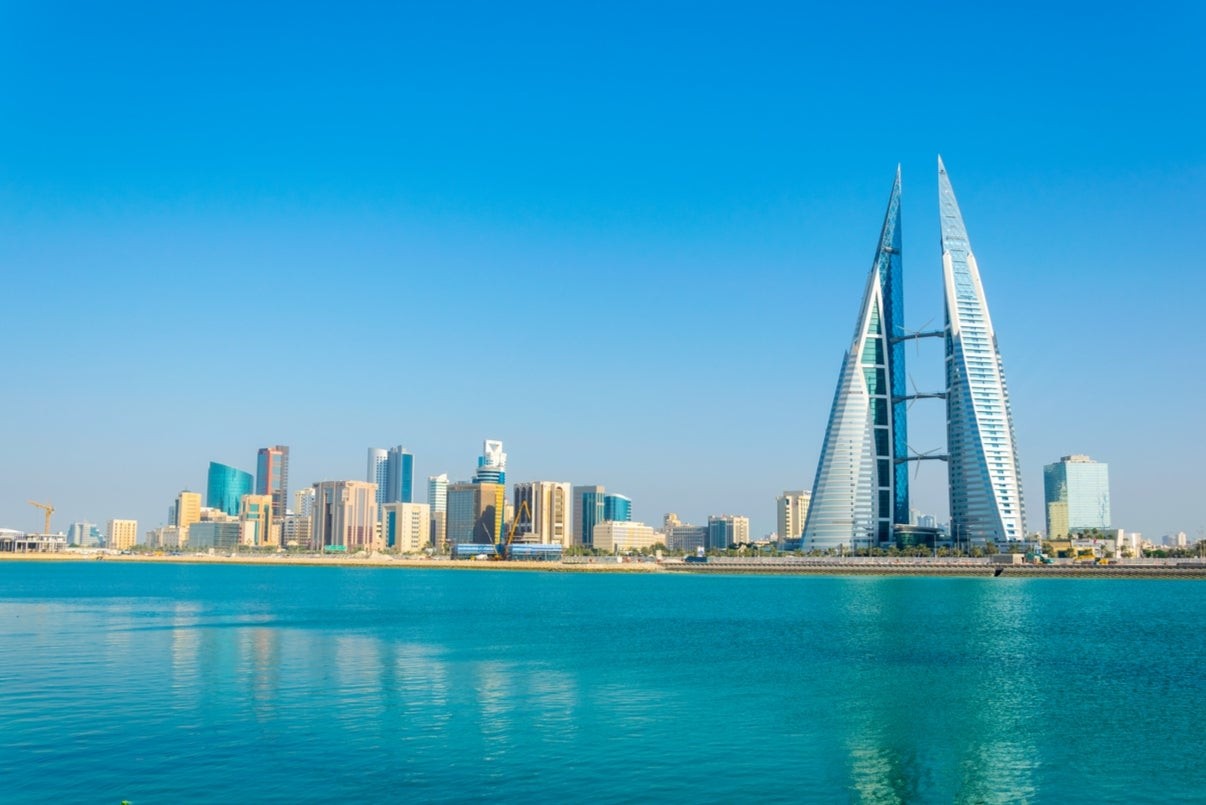
Manama, the vibrant capital of Bahrain, is a dynamic city where the past and present coexist seamlessly. Known for its thriving business district, modern skyscrapers, and rich cultural heritage, Manama offers a diverse experience for travelers. Whether you’re exploring the ancient Bahrain Fort, immersing yourself in the city’s museums and art galleries, or enjoying its contemporary shopping and dining scene, Manama is a city that caters to all interests. Its mix of traditional Arabic culture and modern infrastructure makes it an exciting destination for visitors seeking both relaxation and adventure.
- Best Time to Visit: The best time to visit Manama is from November to March, when the weather is cooler and more pleasant for outdoor activities and sightseeing. Summers (June to September) can be extremely hot, with temperatures often exceeding 40°C (104°F), making it less ideal for outdoor exploration.
- Ideal Duration: 2 to 3-days.
- Popular Attractions: Key attractions in Manama include the Bahrain National Museum, which offers insights into the country’s history and culture, and the ancient Bahrain Fort, a UNESCO World Heritage site. The Al-Fateh Grand Mosque, one of the largest mosques in the world, and the Bahrain World Trade Center, an iconic landmark, are also worth visiting. Don’t miss the Pearl Monument, which symbolizes Bahrain’s history as a pearl-diving nation.
- Things To Do: Explore the bustling Bab al-Bahrain Souk for traditional crafts, spices, and textiles, or relax at the Amwaj Islands, a luxurious waterfront area perfect for dining and leisure. For a taste of local culture, visit the Bahrain International Circuit, home to the Bahrain Grand Prix, or take a stroll through the lush gardens of Al Areen Wildlife Park.
- Best Shopping Markets: Manama is known for its bustling souks and modern malls. The Bab al-Bahrain Souk offers a traditional shopping experience with a wide range of local products such as pearls, spices, and handicrafts. For a more modern shopping experience, head to City Centre Bahrain or the Seef Mall, where you’ll find international brands, restaurants, and entertainment options.
Damascus, Syria:
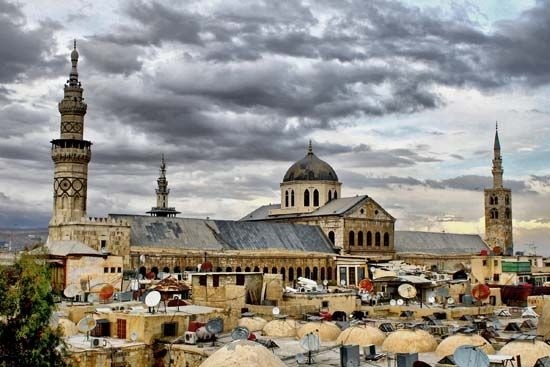
Damascus, one of the oldest continuously inhabited cities in the world, is a captivating destination that takes visitors on a journey through time. With a history that spans over 4,000 years, this ancient city is a treasure trove of cultural and architectural wonders. From its stunning mosques and ancient bazaars to its historic landmarks and vibrant street life, Damascus offers a unique glimpse into the rich heritage of Syria. Whether you're exploring the ancient Old City, admiring Islamic architecture, or sampling local delicacies, Damascus is a city that leaves a lasting impression on all who visit.
- Best Time to Visit: The best time to visit Damascus is during the spring (April to June) and fall (September to November) when the weather is mild and ideal for sightseeing. Summers can be quite hot, with temperatures often exceeding 30°C (86°F), while winters are cooler, particularly in the evenings.
- Ideal Duration: 3 to 4-days.
- Popular Attractions: The heart of Damascus is its Old City, a UNESCO World Heritage site, home to the majestic Umayyad Mosque, one of the oldest and holiest mosques in the world. The Citadel of Damascus, the historic Azem Palace, and the bustling Al-Hamidiyah Souk are also must-see sites. The National Museum of Damascus offers fascinating insights into Syria's rich history, while the Tomb of Saladin and the picturesque straight street, known as Via Recta, are key historical landmarks.
- Things To Do: Explore the ancient streets of the Old City, visit local markets for spices, textiles, and handcrafted goods, and enjoy the sights and sounds of the vibrant souks. You can also visit the traditional hammams (public baths) for a relaxing experience, stroll through the many gardens, and enjoy a delicious meal at one of the city’s restaurants, offering authentic Syrian dishes like kibbeh, shawarma, and baklava.
- Best Shopping Markets: Damascus is known for its traditional markets, including the Al-Hamidiyah Souk, which offers everything from textiles and jewelry to spices and perfumes. The Souk al-Buzuriyah is famous for its selection of aromatic herbs, spices, and dried fruits, while the Old City’s souks provide an authentic shopping experience with handcrafted goods and antiques. For a more contemporary shopping experience, head to the Souk al-Turkman and modern shopping malls around the city.
Beirut, Lebanon:
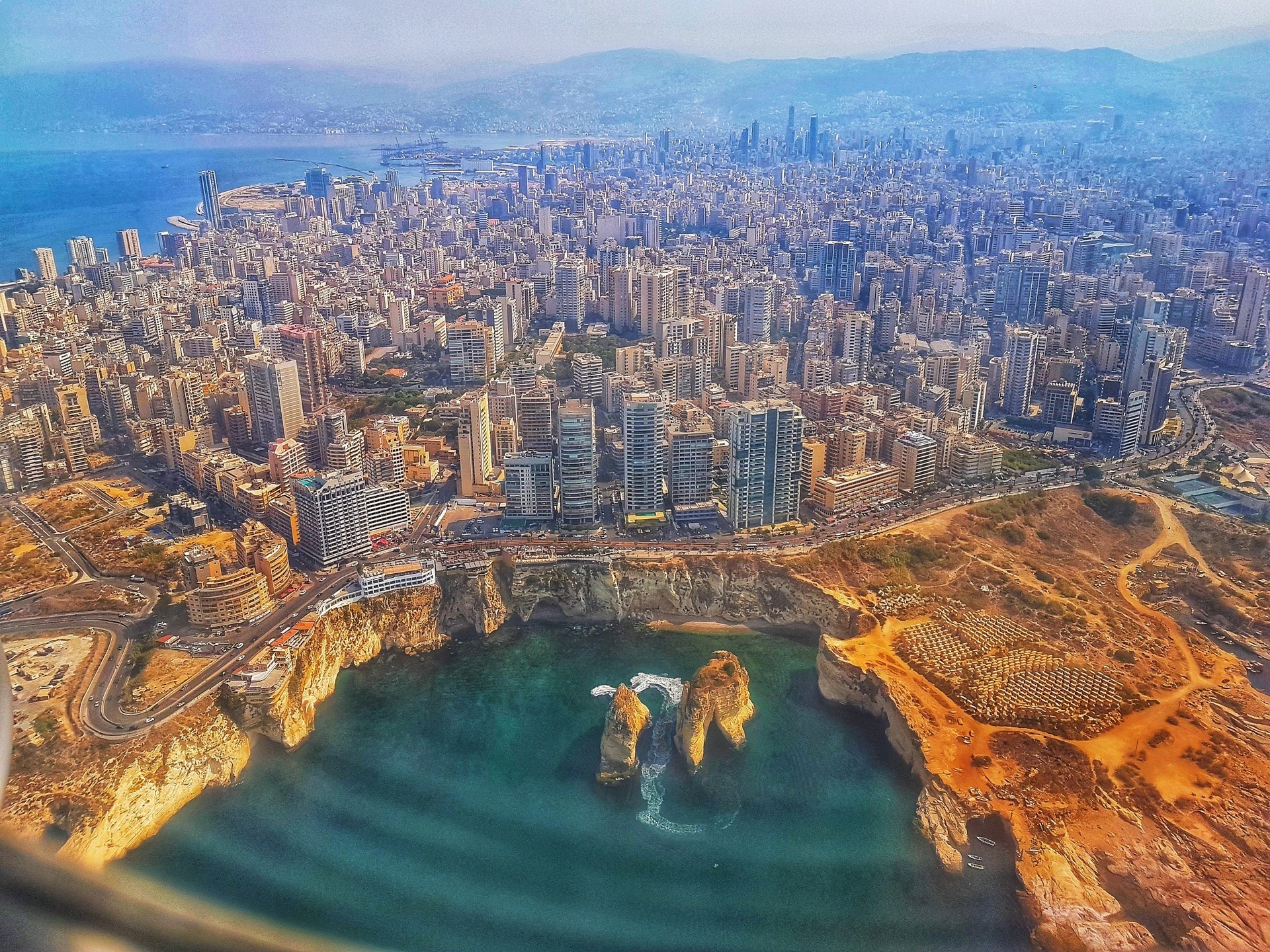
Beirut, the capital of Lebanon, is a dynamic city that seamlessly blends the old and the new. Known as the "Paris of the Middle East," Beirut offers a rich cultural tapestry that reflects its complex history, diverse communities, and modern charm. From ancient ruins and historical landmarks to contemporary art galleries, vibrant nightlife, and bustling markets, Beirut is a city that caters to every traveler. Whether you're walking through the historic streets of Gemayzeh, relaxing by the Mediterranean Sea, or savoring Lebanese cuisine, Beirut is a place full of life and energy that leaves a lasting impression.
- Best Time to Visit: The best time to visit Beirut is during the spring (March to May) and fall (September to November) when the weather is mild and perfect for exploring the city. Summers can be hot and humid, while winters are mild, with occasional rain and cooler temperatures.
- Ideal Duration: 3 to 4-days.
- Popular Attractions: Beirut boasts a range of cultural and historical attractions. The Roman Baths and the National Museum of Beirut are great for history enthusiasts, while the ancient site of Baalbek is easily accessible from the city. The vibrant downtown area, including Martyrs’ Square and Zaitunay Bay, offers beautiful views of the Mediterranean and a chance to enjoy cafes, restaurants, and shops. Don't miss the Pigeon Rocks, natural rock formations that stand in the sea off the coast, offering breathtaking views at sunset.
- Things To Do: Explore Beirut's historic neighborhoods, such as Gemayzeh and Mar Mikhael, known for their charming streets, art galleries, and trendy cafes. Walk along the Beirut Corniche for a scenic view of the sea or visit the vibrant souks in downtown Beirut for shopping and dining. The nightlife in Beirut is renowned, with numerous bars, nightclubs, and restaurants offering a lively atmosphere. You can also indulge in Lebanese food by trying local dishes like hummus, falafel, tabbouleh, and baklava.
- Best Shopping Markets: Beirut is a shopping haven, offering everything from traditional markets to high-end international brands. The Beirut Souks, a modern shopping district in downtown, is home to luxury boutiques and contemporary shops. For a more traditional shopping experience, visit the souks in Gemayzeh and Hamra, where you can find local handicrafts, antiques, jewelry, and spices. The city's markets are a great place to experience Lebanese culture and pick up unique souvenirs.
Erbil, Iraq:
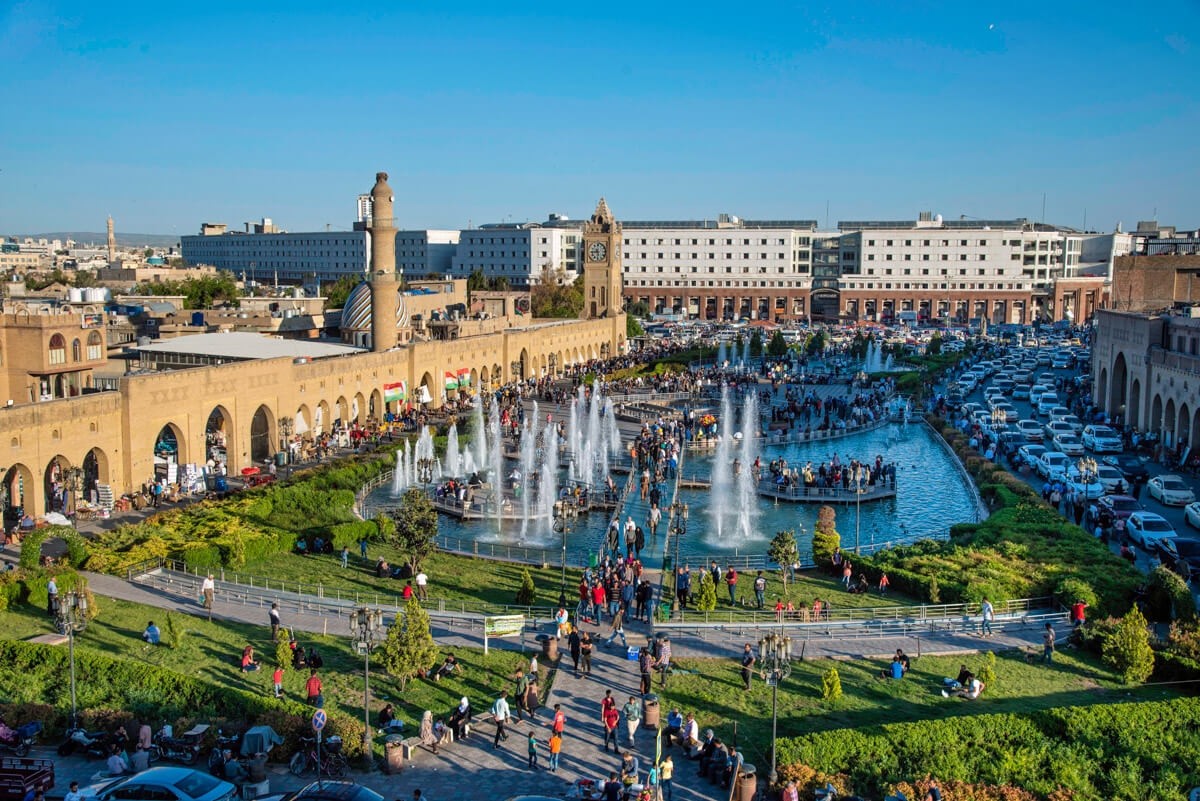
Erbil, the capital of the Kurdistan Region of Iraq, is a city where ancient history meets modern progress. Known for its rich cultural heritage, Erbil offers travelers a unique glimpse into the past with its historic sites, while also showcasing a rapidly growing modern cityscape. The city's centerpiece, the Erbil Citadel, is a UNESCO World Heritage site that has been inhabited for thousands of years, and the local markets, parks, and dining scene highlight the region’s hospitality and Kurdish traditions. Whether you're exploring ancient ruins, enjoying vibrant bazaars, or relaxing in contemporary cafes, Erbil offers an unforgettable experience for every traveler.
- Best Time to Visit: The best time to visit Erbil is during the spring (April to June) and fall (September to November) when the weather is mild and ideal for sightseeing. Summers can be very hot, with temperatures often exceeding 40°C (104°F), while winters can be chilly, especially in the mountains surrounding the city.
- Ideal Duration: 2 to 3-days.
- Popular Attractions: Erbil’s most famous landmark is the Erbil Citadel, which dates back over 6,000 years and offers panoramic views of the city. The Kurdish Heritage Museum is another must-visit, showcasing the region's rich history and culture. Other highlights include the bustling Erbil Bazaar, the stunning Shanidar Park, and the Mound of Qalat, an archaeological site that provides a glimpse into ancient civilizations. The Grand Mosque of Erbil is also worth visiting for its impressive architecture.
- Things To Do: Stroll through Erbil’s old city and explore the historic sites, or shop for local goods and traditional Kurdish crafts in the bustling bazaars. Visit the Kurdish Culture and Art Museum to learn more about the region’s heritage or spend a relaxing afternoon at the local parks, such as Sami Abdulrahman Park. For nature lovers, a short trip to the nearby mountains provides a refreshing escape with hiking opportunities and beautiful landscapes.
- Best Shopping Markets: Erbil’s markets are a blend of traditional and modern shopping experiences. The Erbil Bazaar (also known as the Qaysari Bazaar) is the heart of the city's shopping scene, offering everything from spices and textiles to local handicrafts and antiques. For a more contemporary shopping experience, visit the Majidi Mall or Family Mall, which offer a range of international brands, restaurants, and entertainment options.
Al Balad, Saudi Arabia:
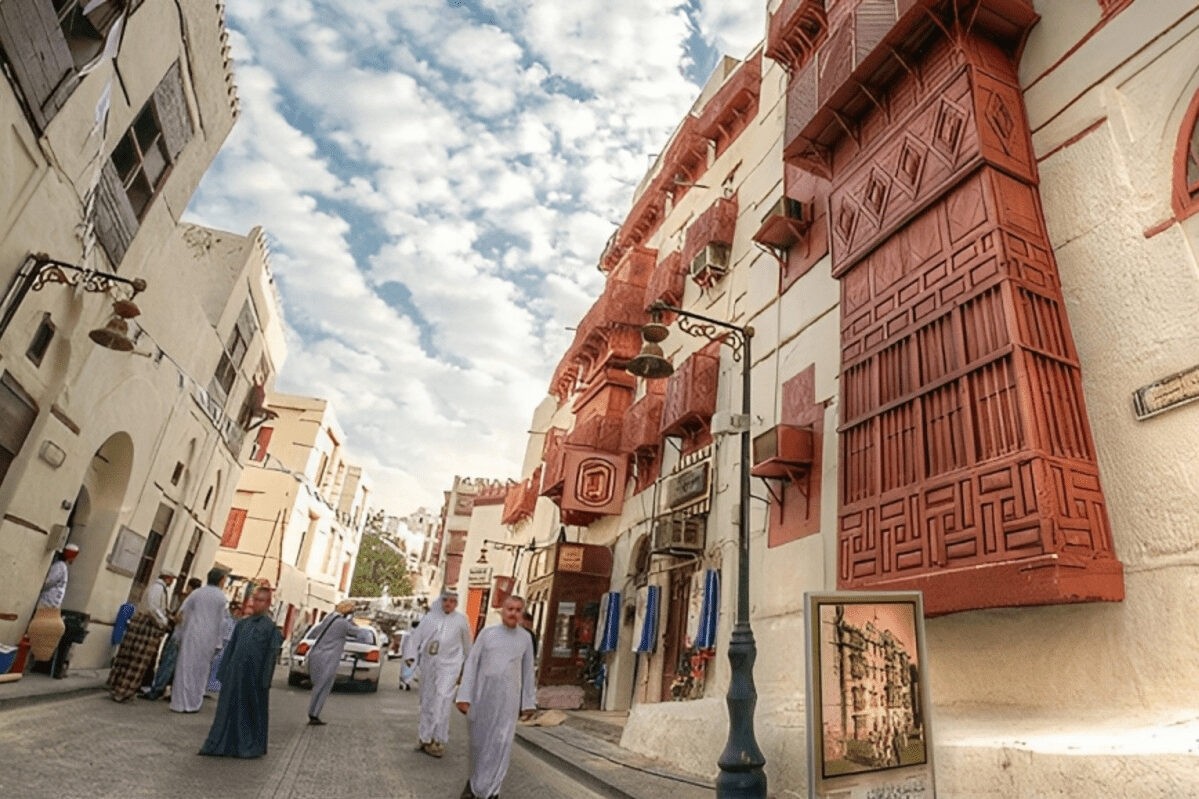
Al Balad, the historic district of Jeddah, Saudi Arabia, is a captivating blend of ancient traditions and modern life. Recognized as a UNESCO World Heritage site, Al Balad is known for its well-preserved buildings, vibrant markets, and rich cultural history. This area, dating back to the 7th century, once served as a major trading hub on the ancient pilgrimage route to Mecca, and today, it offers a unique glimpse into Saudi Arabia's past. The district’s traditional coral-stone houses, narrow alleyways, bustling souks, and historic mosques make Al Balad an essential destination for anyone visiting Jeddah.
- Best Time to Visit: The best time to visit Al Balad is during the cooler months from October to March, when the weather in Jeddah is more pleasant for outdoor exploration. Summer temperatures can be quite high, making it less comfortable to stroll through the district during the hottest months (June to September).
- Ideal Duration: 1 to 2-days.
- Popular Attractions: The heart of Al Balad is its stunning architecture, with traditional coral-stone houses and wooden lattice windows known as “Rawashin.” Notable sites include the Al-Masjid al-Jinn Mosque, the Al Balad Heritage House, and the historic Naseef House. Don’t miss the Al-Balad souks, where you can experience the vibrant energy of the district, offering spices, textiles, jewelry, and handcrafted goods. The district also has significant historical sites, including the Ottoman-era Bab Makkah Gate, which served as the main entrance to Jeddah.
- Things To Do: Wander through the charming narrow streets of Al Balad, discovering hidden courtyards, ancient mosques, and the beautiful architecture. Explore the traditional markets for souvenirs such as spices, perfumes, and fabrics, or visit the Heritage House museums to learn more about the city’s history. You can also enjoy a delicious meal at one of the local restaurants serving authentic Saudi dishes, or sip tea in one of the many traditional cafés.
- Best Shopping Markets: Al Balad is home to some of Jeddah’s most authentic markets. The Al-Balad Souk is a vibrant market offering a range of traditional items such as spices, fabrics, jewelry, and local crafts. It’s an excellent place to buy unique souvenirs and experience the local culture. Additionally, the nearby Gold Souk is perfect for those looking for fine jewelry and precious metals. For a more modern shopping experience, visit the nearby malls like Red Sea Mall or Mall of Arabia.
The Middle East is a destination like no other, offering a harmonious blend of history, culture, and modern marvels. Each city in this region tells its own unique story through its vibrant streets, iconic landmarks, and welcoming communities. By exploring these cultural hubs, you'll gain a deeper appreciation for the traditions and diversity that make the Middle East so enchanting. Whether it's savoring local delicacies, wandering through ancient sites, or connecting with the locals, every moment here is a step closer to understanding the heart of this remarkable region. Let your journey through the Middle East inspire and transform you.




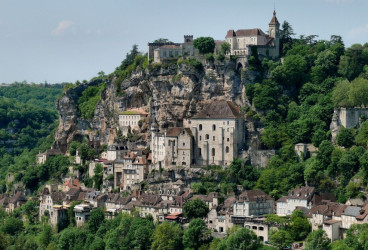







{{item.get_author.first_name}} {{item.get_author.last_name}}
Level 7
5 Photos
36 Reviews
{{item.comment_txt}}
{{item_reply.get_author.first_name}} {{item_reply.get_author.last_name}}
@ {{item_reply.reply_to}}, {{item_reply.reply_txt}}